Dear Members and Visitors, As promised, NC software has been upgraded over weekend. This is an essential step towards further development of the NC platform. The following features are available immediately:
|
|||
A ban on Samurai swords comes into effect from today. Those caught with the weapons could face up to seven years in prison. In a bid to cater for collectors, those made before 1954 or at another time by traditional hand-made methods will be exempt.
Talks about potential sword ban started in December 2007 after another high profile attack involving a 'samurai sword'. It is known that Department of Justice had been in contact with local martial arts organisations (Iaido Association of Ireland is particular) is order to avoid unnecessary restrictions for martial arts practitioneers and authentic sword collectors. In the light of recent global trends to regulate possession and transportation of 'samurai' swords (which sometimes comes in quite narrow-minded forms) the new Irish legislation appears to be reasonable, especially taking into account the (more than modest) size of the local sword scene. Mirroring the UK sword ban which was introduced in April 2008 as one of the questionable measures to fight 'knife crime', authentic hand-made Japanese swords (Nihonto) are exempt (however I couldn't yet find any reference to whether sports equipment such as iaito and shinken is to be banned or not). The real concern is the practical side of the legislation and the way it's going to be implemented. There's been numerous occasions in UK since introduction of the sword ban when law-abiding collectors had trouble importing antique swords. It's perfectly understandable due to the fact that in order for Customs to make sure that it's legal to import a sword, some sort of cerfificate required proving its age and provenance. And the most common cert of this kind (if any) is the NBTHK paper hand-written in Japanese. No wonder Customs officers, sorting office workers and law enforcement authorities would not be able to take it as a supportive documentation without difficult (and costly) translation.And this is the neigbouring UK which is much more accustomed to importing/exporting Japanese collectible weapons than Irish. How many Customs officers and An Post employees were instructed about differences between replica and authentic Japanese swords or even have seen ones? Will they be collector-friendly or take an eBay approach and stop any import of 'illegal samurai-like swords' unless (with immense trouble) proven otherwise? If temporarily or permanently seized, will real Nihonto be given a proper care? There is no doubt that curculation of cheap and dangerous replica had to be stopped, even with the level or crime involving samurai swords being ridiculously low in comparison to the usage of widely available home utensils.But will the fair treatment of martial arts practitioneers and sword collectors be guaranteed? Time will tell. |
|||
I have acquired another Wakizashi. It is said to be Nobuyoshi, but not sure of era, school, date etc. I have included pics of 2 documents that came with the Wakizashi, but (blush blush!) they may be upside down. Any info appreciated. Baz |
|||
Nihonto Club can now be found on Twitter (@NihontoClub). Follow us to get the most up-to-date information about the site. |
|||
Some of you might have noticed that photos weren't showing up when uploading them into Image Gallery. This has been fixed now. Images uploaded in the past which had broken thumbnails are now appearing correctly. Apologies to all the users who had issues with uploading. Regards, |
|||
There's been the following announcement on eBay site: From 10th March 2009, all knives and swords except cutlery will be banned from sale on eBay.co.uk and eBay.ie. The definition of cutlery includes those implements which can be used for eating, including cutlery sets, individual pieces of cutlery and antique cutlery. All other items, including knives used in the preparation of food will be banned, including (but not limited to);
We will be able to determine if the buyer or bidder enters the details of a debit card, solo card or pre-paid card, the types of card most likely to be held by under-18s. If the details of any of these types of cards are entered, eBay will prevent the buyer or bidder from completing the transaction. If the bidder or buyer enters valid credit card details they will then be given the option to pay using any approved method of payment. We will be strict in the enforcement of these new policies and any seller who repeatedly attempts to break this policy will face strict sanctions, including possible suspension from the eBay site. http://www2.ebay.com/aw/uk/200902231205572.html This means no more bargains for Irish and British collectors and researchers, thanks to Government's inability to fight crime. |
|||
Official Launch date Feb 16th, 2009 RealNihonto.com is an online retail shop for nihonto and nihonto accessories. The owner, Mr. Christian T. Chaffee has been studying Japanese art swords for 20 years and has retained some of the most remarkable pieces he has come across for his own collection. The site is also aimed at education and appreciation of the fine art of handmade swords. So please visit the site and enjoy viewing video and high resolution photography. |
|||
The Japanese Centre Northern Ireland has announced on their web page: TENSHIN SHODEN KATORI SHINTO RYU BUJUTSU ALL WELCOME
The course is from Saturday the 2nd to Thursday 7th May 2009 in Coleraine N Ireland. any Belfast airport will be ok. Dublin is fine but 2hrs train |
|||
Dear Members, There had been issues recently with sending activation emails to new accounts. If you didn't receive a welcome email after creating a new account at NihontoClub.com please use Request New Password form or contact me directly.
Kind Regards, |
|||
Reading Japanese names is not easy. Reading a name from 500 years old sword tang is significantly more difficult. But even when the kanji is read, what is the correct way to pronounce it and, subsequently, put it in romaji? Not just various Kanji symbols may have different readings in names, but some smiths preferred non-standard readings, or Chinese form instead of Japanese form. Is it Akitoshi or is it Myoju? (an example from Hawley himself) It may be a source of great confusion, especially for non-Japanese students with good, limited or even no knowledge of the Japanese language. Luckily, specialized reference literature helps to find answers. The reader may just open Hawley's book and look up the right name. But is it as unambiguous and easy? The answer is no. Even the same name in kanji may have different readings (and records) in Hawley's and they won't be the ones which are easy to find either. First of all, we shouldn't forget that Willis Hawley was using paper notes, cards and a typewriter to compile his monumental book. It didn't allow machine validation which we enjoy in present days, insertion and modification was difficult and error-prone. Some duplicate records were added (and then found). Then, Hawley himself may have (consciously or unconsciously) put some records multiple times under different pronunciations. And finally, some smiths may have changed their names themselves leaving the honour of recording it to Nihonto historians. |
|||

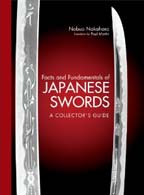
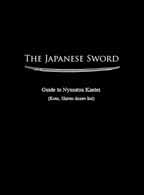
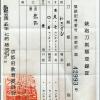
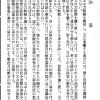

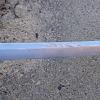
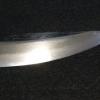

Recent comments
47 weeks 8 hours ago
49 weeks 6 days ago
1 year 44 weeks ago
2 years 42 weeks ago
4 years 3 weeks ago
4 years 11 weeks ago
4 years 13 weeks ago
4 years 13 weeks ago
4 years 13 weeks ago
4 years 13 weeks ago